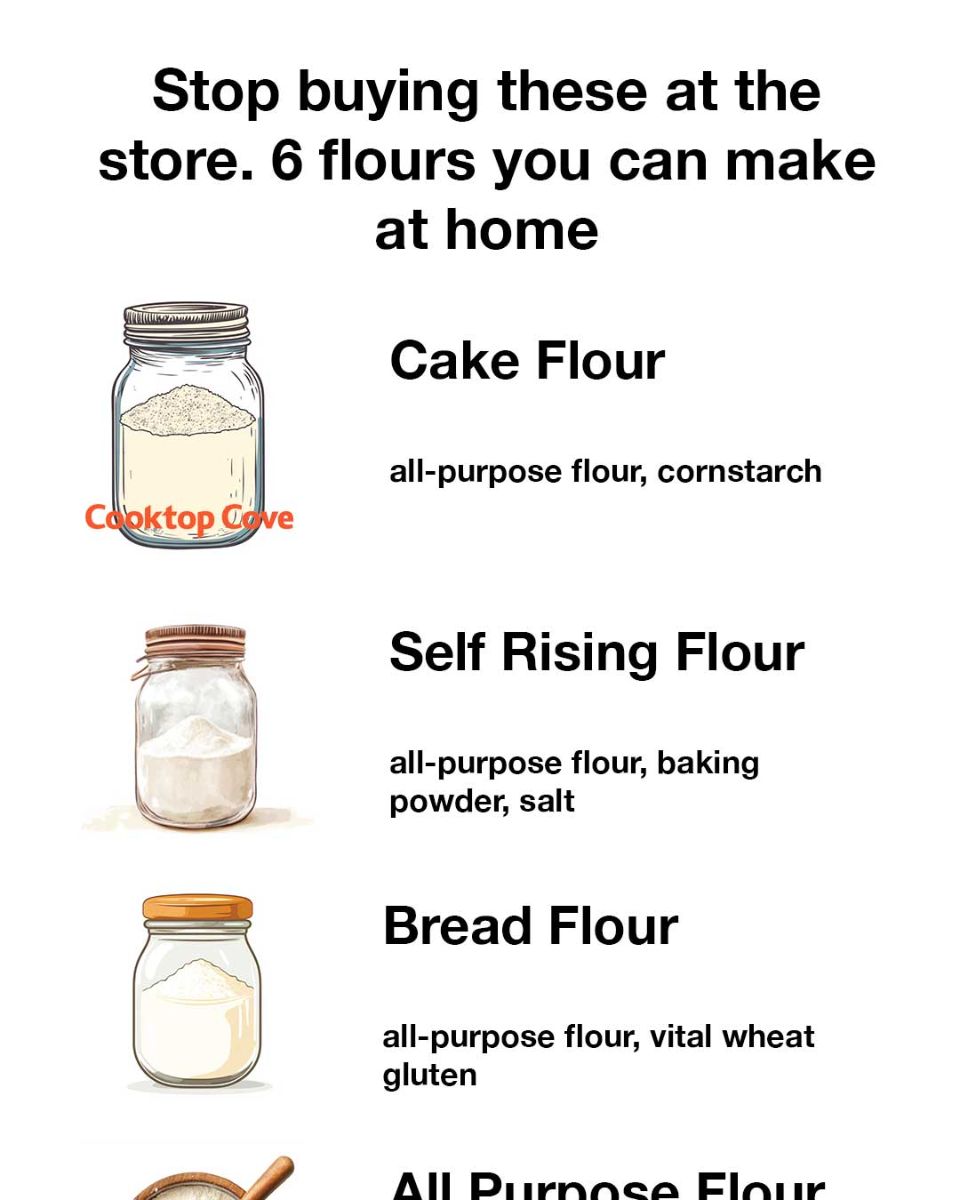ADVERTISEMENT
**Instructions:**
1. Add **rice** (1-2 cups) into your blender or coffee grinder.
2. Blend until you have a fine powder. Depending on your equipment, this might take a few minutes.
3. Sift the flour to remove any larger particles and store in an airtight container.
**Tip**: Brown rice flour has a more robust flavor and slightly coarser texture than white rice flour. Choose the one that best suits your recipe.
—
### **5. Chickpea Flour (Garbanzo Bean Flour)**
Chickpea flour is made from ground **chickpeas** (garbanzo beans) and is an excellent source of protein, fiber, and vitamins. It has a slightly earthy, nutty flavor and is perfect for making **falafel**, **socca** (a savory pancake), or as a binder in gluten-free baked goods.
#### **How to Make Chickpea Flour at Home:**
– **Ingredients**: Dried chickpeas (garbanzo beans).
– **Equipment**: Food processor or high-speed blender.
**Instructions:**
1. Place **dried chickpeas** (1-2 cups) in your food processor or blender.
2. Blend until you get a fine powder. It may take a little longer than other flours, so be patient.
3. Sift the flour to remove any large pieces and store in an airtight container.
**Tip**: If you’re using chickpea flour as a binder or thickener in savory dishes, make sure to cook it well to reduce its raw flavor.
—
### **6. Spelt Flour**
Spelt flour is an ancient grain that’s often used as a substitute for wheat flour. It has a mild, slightly nutty flavor and contains gluten, but many people find it easier to digest than regular wheat flour. It’s perfect for **breads**, **pasta**, and **cakes**.
#### **How to Make Spelt Flour at Home:**
– **Ingredients**: Whole spelt berries (whole grain spelt).
– **Equipment**: Grain mill, high-speed blender, or food processor.
**Instructions:**
1. If you have a **grain mill**, you can grind your **whole spelt berries** directly into flour. Alternatively, you can use a **high-speed blender** or **food processor** to grind the berries in small batches until fine.
2. Sift the flour to remove any larger particles.
3. Store in an airtight container.
**Tip**: Spelt flour is a bit lighter than regular wheat flour, so you might need to adjust recipes slightly if you’re substituting it.
—
### **Why Make Flour at Home?**
1. **Better Control**: When you make flour at home, you know exactly what’s in it—no preservatives, additives, or excess sugar.
2. **Cost-Effective**: Some of these flours, like almond or oat flour, can be quite expensive when bought pre-packaged. Making your own is a budget-friendly alternative.
3. **Health Benefits**: Many homemade flours are **gluten-free**, **high in protein**, and **rich in fiber**. You can easily choose the flour that fits your dietary needs.
4. **Freshness**: Homemade flour is fresher and often more flavorful than store-bought versions that may have been sitting on shelves for months.
—
### **Conclusion:**
Making your own flour at home is a simple, rewarding process that can add a whole new dimension to your cooking and baking. With a few basic ingredients and some kitchen equipment, you can create **almond flour**, **oat flour**, **coconut flour**, **rice flour**, **chickpea flour**, and **spelt flour**—each with its unique flavor and texture. So next time you’re in need of flour for a recipe, why not skip the store and try making your own instead? You’ll be amazed at the difference in taste, texture, and satisfaction!
ADVERTISEMENT
